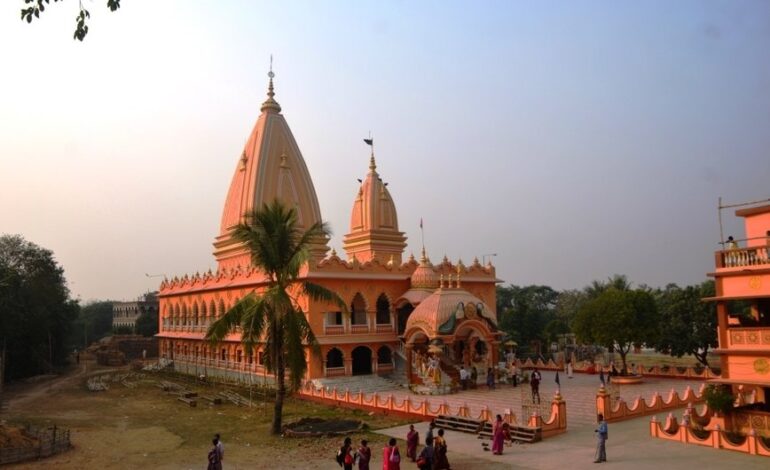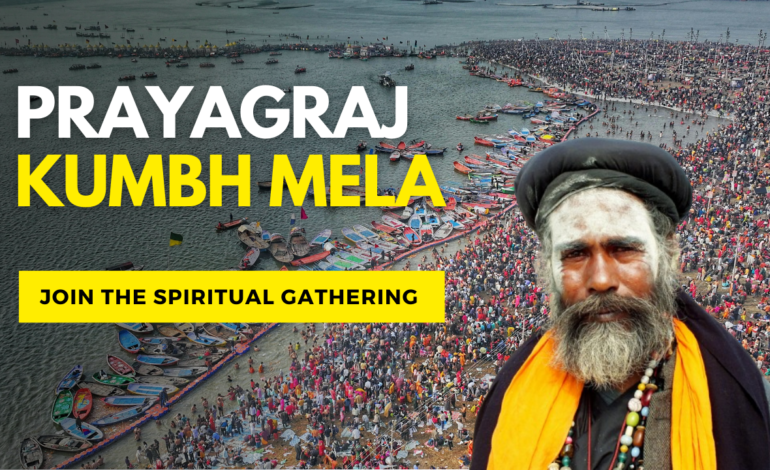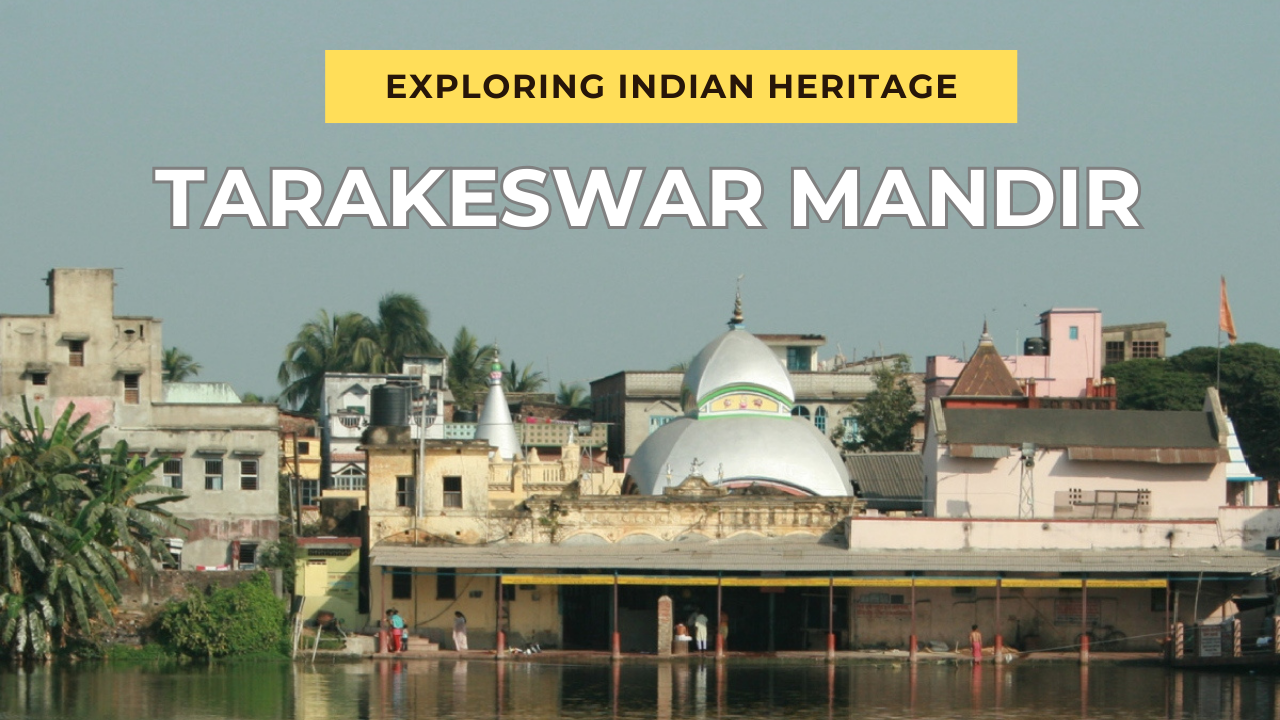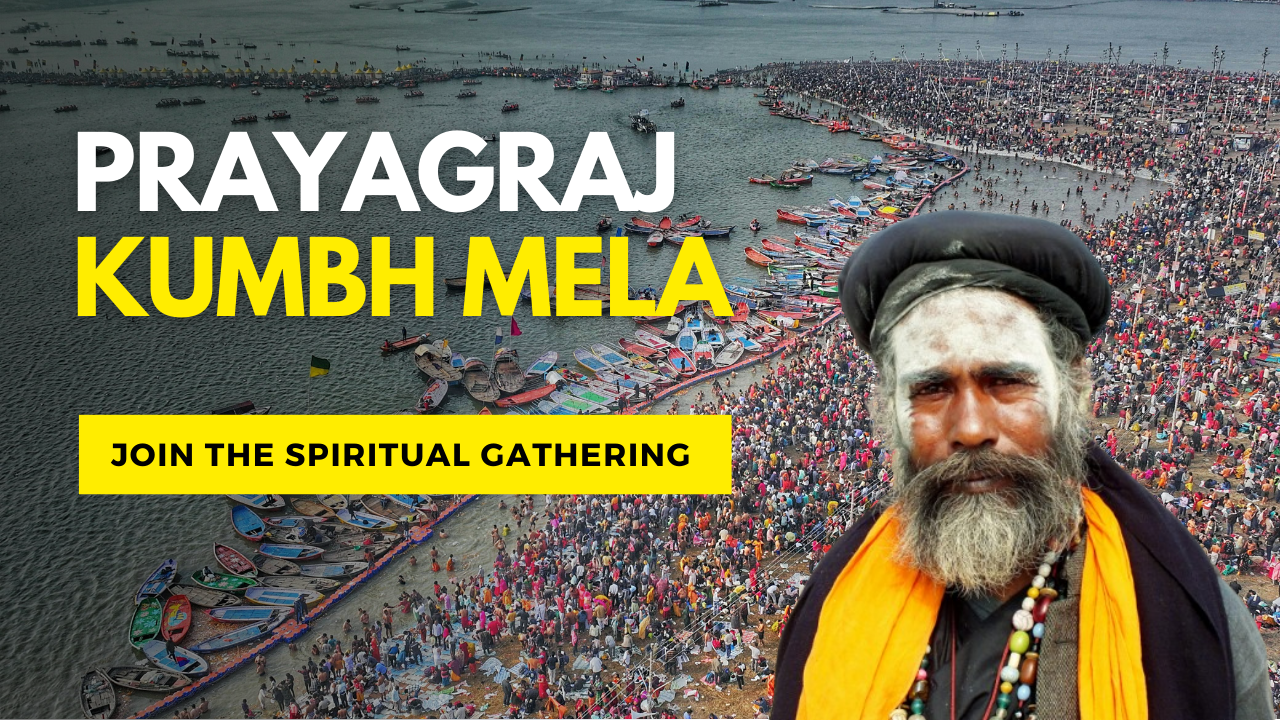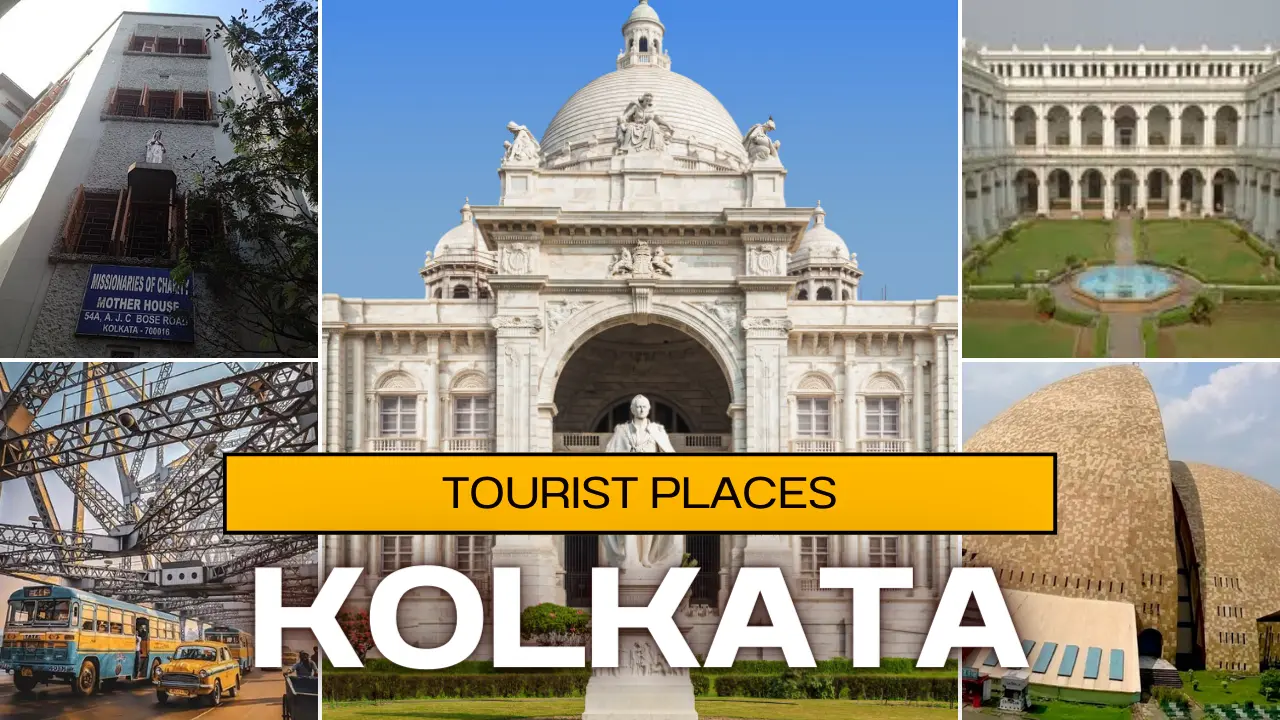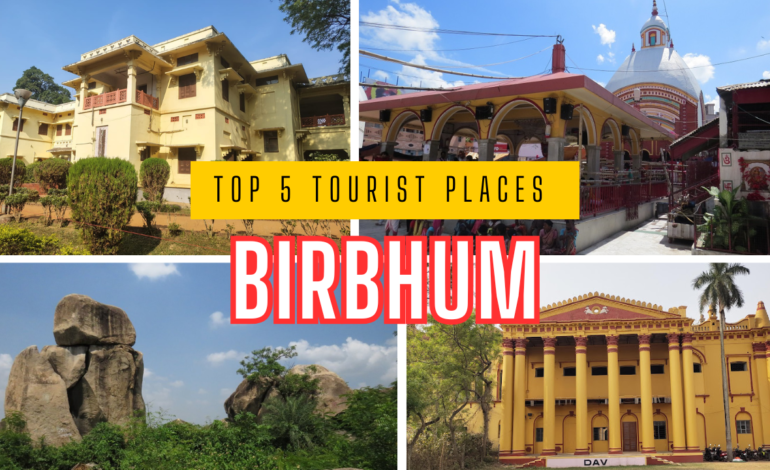
Top 5 Tourist Places in Birbhum – Discover Must-Visit Spots
Tourist Places in Birbhum: Birbhum, located in the Indian state of West Bengal, serves as the northernmost district of the Burdwan division. Its administrative center is Siuri, with Bolpur, Rampurhat, and Sainthia being other prominent towns.
This district shares its western border with Jharkhand’s Jamtara, Dumka, and Pakur districts, while its eastern and southern boundaries are flanked by Murshidabad, East Burdwan, and West Burdwan districts of West Bengal.
Known as the “Land of Rangamati,” Birbhum stands out with its unique topography and cultural heritage. The western region is part of the Chotanagpur Plateau, characterized by its rugged terrain and bushy landscapes. This gradually transitions into the fertile alluvial plains in the eastern parts of the district.
Historically, Birbhum has been the cradle of various religious and cultural movements. The district is internationally renowned for Visva-Bharati University, established by Rabindranath Tagore in Santiniketan. Birbhum also celebrates its vibrant cultural legacy through numerous fairs and festivals, with the Paush Mela at Santiniketan and the Baul Mela at Jaydev Kenduli standing out as key attractions.
Agriculture is the backbone of Birbhum’s economy, engaging about 75% of its population. The district is well-known for cotton farming, sericulture, and traditional industries like weaving, rice milling, oilseed milling, lacquer work, and pottery. Additionally, the Bakreshwar Thermal Power Station serves as the district’s sole heavy industrial hub.
Table of Contents
ToggleTop 5 Tourist Places in Birbhum
1. Bolpur Shantiniketan
Santiniketan, located in the city of Bolpur within West Bengal’s Birbhum district, is a historic neighborhood with deep cultural and educational significance. Established by Maharishi Debendranath Tagore and later nurtured by his son, Nobel laureate Rabindranath Tagore, it is renowned as the site of Visva-Bharati University.
Rabindranath Tagore’s vision and active involvement in its growth transformed Santiniketan into a thriving university town. In 2023, Santiniketan gained international recognition by being added to the UNESCO World Heritage List, a decision announced during the 45th session of the UNESCO World Heritage Committee.
In 1863 (1270 in the Bengali calendar), Debendranath Tagore leased 20 acres of land, which included two Chatim trees, from Bhuvan Mohan Singh, the zamindar of Raipur, for a nominal annual fee of ₹5 (approximately $0.06 USD). He built a guesthouse on this land and named it “Shantiniketan,” translating to “Abode of Peace.” Over time, the name extended to encompass the entire area.
As noted by Vinay Ghosh, Bolpur was a small village in the mid-19th century, but its growth accelerated with the development of Shantiniketan. Parts of Bolpur were once under the zamindari of the Raipur Singh family, and Bhuvan Mohan Singh himself founded a village in the area, naming it Bhubandanga.
Bhubandanga was infamous for being a refuge for dangerous dacoits who often resorted to violence. However, the situation changed when their leader surrendered to Debendranath Tagore and offered assistance in transforming the region. Under the shade of a Chatim tree, Debendranath would meditate frequently. Inspired by The Crystal Palace in London’s Hyde Park, he built a glass structure measuring 60×30 feet for Brahma worship. Featuring a tiled roof and marble flooring, this edifice became a notable local attraction.
On January 27, 1878 (13th Magh 1284), a 17-year-old Rabindranath Tagore visited Santiniketan for the first time, marking the beginning of his association with the place.
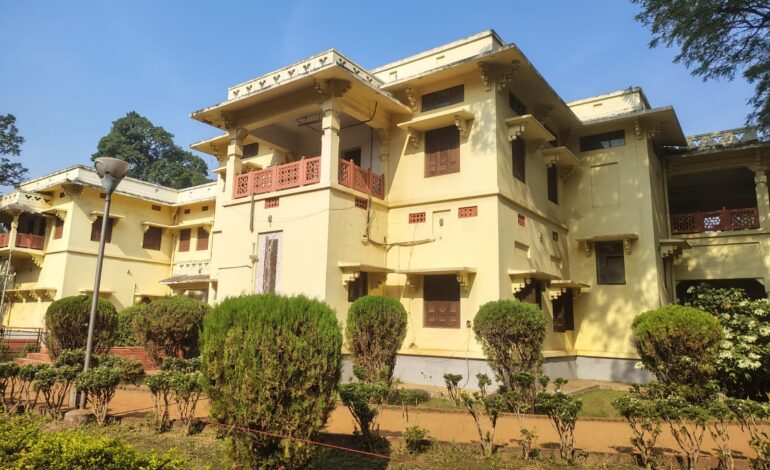
2. Tarapith Kali Temple
Tarapeeth, a serene temple town near Rampurhat in Birbhum district of West Bengal, is famous for its temple dedicated to the Tantric goddess Tara and the adjacent cremation ground. These sites are revered by Hindus as sacred places of pilgrimage, deeply rooted in spiritual and religious traditions. The town derives its name from the worship of goddess Tara, central to its identity.
Tarapeeth is also renowned for the legendary ascetic Bamakshepa, often referred to as the “mad monk,” who dedicated his life to the devotion of Tara Devi. He performed rituals at the temple and engaged in intense Tantric practices under the guidance of Kailaspati Baba in the cremation ground. Bamakshepa’s ashram, located in the nearby village of Atla, continues to attract devotees and seekers of spiritual wisdom.
According to legend, Vasishtadev, the son of Brahma, took on the form of Kama for spiritual practice. Dissatisfied with Kama’s indulgent behavior, he left Assam and came to Radha Bengal to continue his ascetic journey. On the eastern bank of the Dwarka River, within the Ishan region of Bakreshwar in Radha, he meditated intensely on a Panchamundi seat in the cremation ground. Through deep penance, he attained spiritual enlightenment and a vision of the goddess Ugratar in her nurturing form. Later, the saint Vamakshayapa also achieved enlightenment on this same sacred seat.
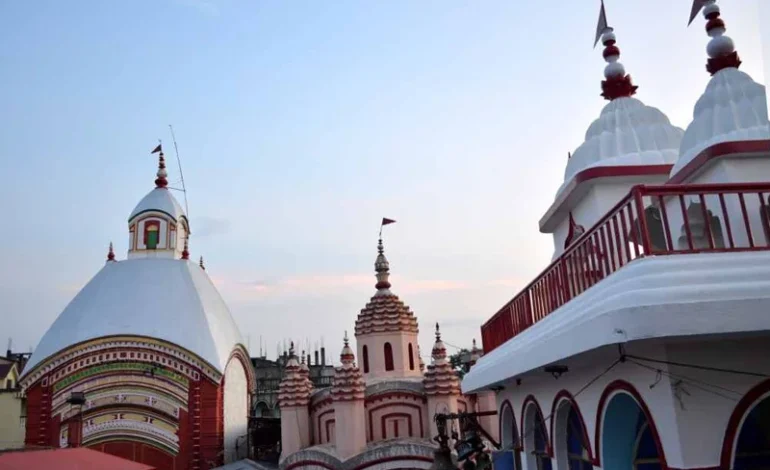
3. Hetampur Rajbari
Hetampur, a prominent village in the Siuri subdivision of Birbhum district, West Bengal, is celebrated for its royal heritage and historical significance. Situated near Dubrajpur, the village is best known for the majestic Hetampur Rajbari, a grand palace steeped in history, and its prestigious college. Originally called Ranjan Prasad, the palace was named in honor of the individual responsible for its construction and management.
Designed as a fortified structure, Hetampur Rajbari features an impressive 999 doors, earning it the name Hetampur Hazarduari, which translates to “Palace of a Thousand Doors.” Beyond the palace, Hetampur is also home to several fascinating terracotta temples, showcasing diverse architectural styles and intricate craftsmanship, adding to the cultural richness of the village.
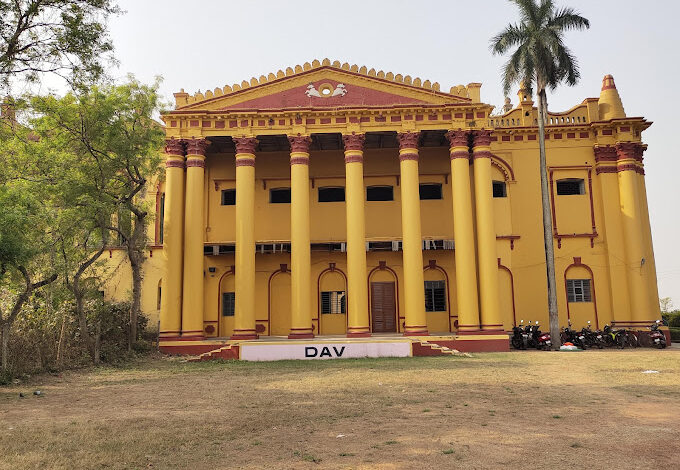
4. Mama Bhagne Pahar
Mama Bhagne Pahar is the sole hill located in Birbhum district, West Bengal. Positioned near Dubrajpur, it lies at the eastern edge of the Chota Nagpur Plateau and is predominantly composed of granite rock. This hill has become a popular tourist attraction due to its unique geological and mythological significance.
Despite being surrounded by flatlands with no other hills nearby, Mama Bhagne Pahar stands out and has inspired various legends. One tale suggests that during Lord Rama’s quest to rescue Sita in Lanka, stones for constructing a bridge were transported from the Himalayas, and some accidentally fell, forming Mama Bhagne Pahar. Another legend recounts that Vishwakarma, on Lord Shiva’s command, attempted to build a second Kashi in one night, and stones that fell during this endeavor contributed to the creation of the hill.
The region surrounding Mama Bhagne Pahar, including the Pahareshwar Crematorium and Hetampur Rajbari, has developed into a notable tourist hub. The picturesque landscapes have also served as the backdrop for iconic films like Satyajit Ray’s Abhijan, Goopy Gyne Bagha Byne, and Sandip Ray’s Robertson’s Ruby and Gosaipur Sargaram.
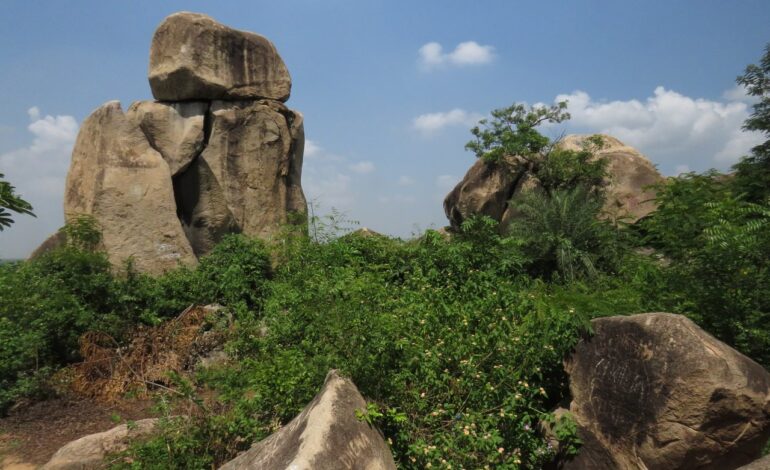
5. Ekachakra
Ekachakra (also spelled Ekachakk or Ekachakka) is a quaint village situated about 20 kilometers from Rampurhat town in the Birbhum district of West Bengal. Rich in history and mythology, it is famously mentioned in the Mahabharata as a place where the Pandavas resided during their exile. Ekachakra is also revered as the birthplace of Nityananda Prabhu (1474 CE), a prominent figure in the Gaudiya Vaishnava tradition. The village spans approximately eight miles in both directions.
The name “Ekachakra” is rooted in a legendary tale from the Mahabharata. During the Kurukshetra War, when Lord Krishna broke his vow of neutrality to protect his devotee Arjuna, he charged at Bhishma with a wheel. Moved by Bhishma’s prayers, Krishna calmed down and discarded the wheel, which is said to have landed on this very land. Hence, the village came to be known as Ekachakra, with “Ek” meaning one and “Chakra” meaning wheel.
According to the epic, Ekachakra is also believed to be the dwelling place of the demon Bakasura, who was ultimately slain by Bhima. While this village holds a special place in mythology, several other locations across India are also associated with the ancient Ekachakra.
